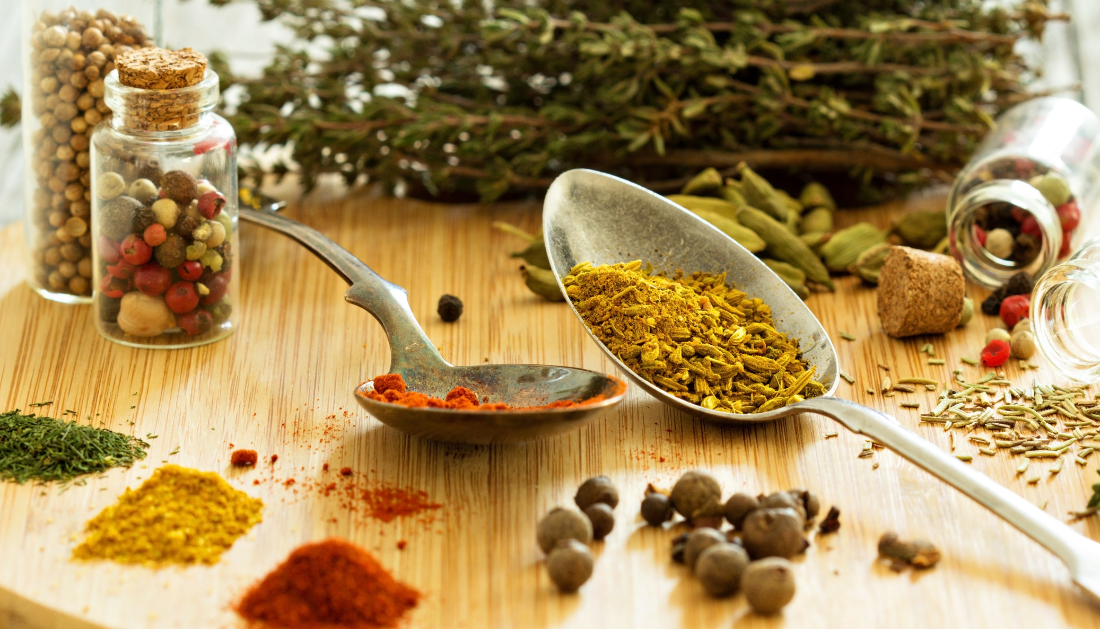

In a recent publication in the journal Nutrients, a team of researchers delved into the impact of regular intake of polyphenols from the diet on the composition of gut microbiota in healthy adults.
Background
Polyphenols, present in a wide array of foods and beverages, are phytochemicals renowned for their potential health benefits, including their influence on gut microbiota.
These compounds can affect health through direct effects on cells and by altering the composition of gut microbes, resulting in the production of bioactive metabolites that influence various physiological processes.
However, the precise effects of habitual consumption of polyphenols, particularly from everyday foods and culinary herbs and spices, on gut microbiota remain incompletely understood.
Studies suggest that polyphenols may enhance the presence of beneficial bacteria while reducing harmful ones, thereby contributing to improved gut health and potentially impacting broader health outcomes such as inflammation, oxidative stress, and cardiovascular health.
Further research is necessary to elucidate the effects of habitual polyphenol consumption on gut microbiota and its implications for human health.
About the study
The current study involved a secondary analysis of data from the International Cohort on Lifestyle Determinants of Health (INCLD Health), focusing on baseline data to investigate the association between dietary polyphenol intake and gut microbiome composition.
A subgroup of 96 participants was selected based on the completion of specific surveys and tests, excluding those with certain health conditions or recent antibiotic use.
Deoxyribonucleic acid (DNA) was isolated from fecal samples using a specialized kit and sequenced to identify microbial DNA. The sequencing targeted the V4 region of the 16S ribosomal ribonucleic acid (rRNA) gene, with subsequent analysis to identify and classify microbial taxa. The data underwent filtering and normalization to ensure reliability using an online platform designed for microbiome data analysis.
Polyphenol intake was quantified based on dietary data collected through a food frequency questionnaire, with a focus on identifying polyphenol content in various foods and beverages, excluding minimal polyphenol sources.
The assessment of polyphenol intake considered both total daily consumption and the frequency of herb and spice usage known for their high polyphenol content. This method allowed for a comprehensive analysis of polyphenol exposure from regular dietary habits.
Statistical analysis explored the diversity of gut microbiota and its relationship with polyphenol intake. This included examining differences in microbial diversity and abundance across varying levels of polyphenol consumption.
Study results The study analyzed the characteristics and dietary habits of 96 participants, predominantly Caucasian, non-Hispanic women with normal cardiometabolic measures. The majority were non-smokers and consumed alcohol moderately.
Dietary polyphenol consumption varied, with flavonoids being the most commonly consumed class. Frequently used herbs and spices included black pepper, cinnamon, ginger, onion, garlic, and turmeric, each with varying polyphenol content.
Analysis of microbial communities, stratified by polyphenol consumption, revealed Firmicutes as the dominant phylum across all groups, with no significant differences in microbial diversity or community structure observed between low, medium, and high polyphenol consumers.
However, the abundance of specific microbial taxa varied with levels of dietary polyphenol intake. Higher polyphenol consumption was associated with increased abundance of Lactobacillus and Sutterella, and decreased abundance of the Eubacterium ventriosum group, Ruminococcus torques group, Bacteroides, and Enterococcus.
Similarly, the frequency of herb and spice usage rich in polyphenols did not affect overall microbial diversity but influenced the abundance of specific taxa.
High-frequency users exhibited a distinct microbial profile compared to low-frequency users, with variations in the abundance of Lachnospiraceae UCG 004, Lachnotalea, and Lachnospiraceae UCG 001.
Correlation analyses identified significant relationships between total and specific classes of polyphenol consumption and microbial taxa. Abundance of Lactobacillus and Sutterella correlated positively with total polyphenol, flavonoid, and lignan consumption.
In contrast, abundance of Eubacterium ventriosum, Ruminococcus torques group, Bacteroides, and Enterococcus showed an inverse correlation with polyphenol intake.
Different classes of polyphenols also exhibited varied correlations with different microbial taxa, underscoring the intricate interplay between diet and gut microbiota.
Conclusions
The study investigated the association between dietary polyphenol intake and gut microbiota in healthy adults, focusing on the consumption of polyphenol-rich foods and herbs/spices.
The findings revealed specific patterns of gut microbial composition associated with levels of polyphenol consumption, indicating an increased abundance of beneficial microbes such as Lactobacillus and Sutterella with higher polyphenol intake.
Conversely, certain microbes exhibited an inverse relationship with polyphenol consumption, suggesting complex interactions between diet and gut health. The study also identified potential microbial markers for the use of polyphenol-rich herbs and spices.
These findings highlight the complex relationship between dietary polyphenols and gut microbiota, suggesting that polyphenols may influence gut health.
This underscores the promising role of dietary polyphenols in modulating gut health and emphasizes the need for further research to better understand these relationships.
For more information: Relationships between Habitual Polyphenol Consumption and Gut Microbiota in the INCLD Health Cohort, Nutrients, https://doi.org/10.3390/nu16060773
more recommended stories
 Phage Therapy Study Reveals RNA-Based Infection Control
Phage Therapy Study Reveals RNA-Based Infection ControlKey Takeaways (Quick Summary) Researchers uncovered.
 Safer Allogeneic Stem Cell Transplants with Treg Therapy
Safer Allogeneic Stem Cell Transplants with Treg TherapyA new preclinical study from the.
 AI in Emergency Medicine and Clinician Decision Accuracy
AI in Emergency Medicine and Clinician Decision AccuracyEmergency teams rely on rapid, accurate.
 Innovative AI Boosts Epilepsy Seizure Prediction by 44%
Innovative AI Boosts Epilepsy Seizure Prediction by 44%Transforming Seizure Prediction in Epilepsy Seizure.
 Hypnosis Boosts NIV Tolerance in Respiratory Failure
Hypnosis Boosts NIV Tolerance in Respiratory FailureA New Approach: Hypnosis Improves NIV.
 Bee-Sting Microneedle Patch for Painless Drug Delivery
Bee-Sting Microneedle Patch for Painless Drug DeliveryMicroneedle Patch: A Pain-Free Alternative for.
 AI Reshapes Anticoagulation in Atrial Fibrillation Care
AI Reshapes Anticoagulation in Atrial Fibrillation CareUnderstanding the Challenge of Atrial Fibrillation.
 Hemoglobin as Brain Antioxidant in Neurodegenerative Disease
Hemoglobin as Brain Antioxidant in Neurodegenerative DiseaseUncovering the Brain’s Own Defense Against.
 Global Data Resource for Progressive MS Research (Multiple Sclerosis)
Global Data Resource for Progressive MS Research (Multiple Sclerosis)The International Progressive MS Alliance has.
 AI Diabetes Risk Detection: Early T2D Prediction
AI Diabetes Risk Detection: Early T2D PredictionA new frontier in early diabetes.

Leave a Comment